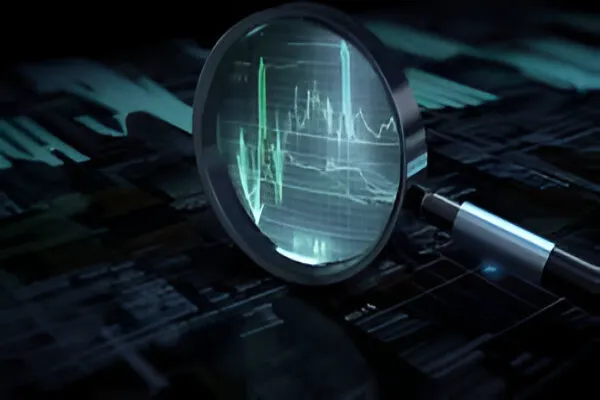
Detecting insider trading is crucial to maintaining fair and transparent markets. Uncovering these hidden activities involves a blend of advanced technology, regulatory frameworks, and vigilant oversight. By delving into the strategies that reveal insider trading, we can better protect investors and uphold market integrity. Start your trading journey with Nerdynator, a reliable trading platform online.
Regulatory Frameworks and Their Role in Monitoring
The SEC’s Tools and Regulations
The U.S. Securities and Exchange Commission (SEC) plays a vital role in tracking insider trading. The SEC uses various tools to keep an eye on market activities. One key tool is the Market Information Data Analytics System (MIDAS), which collects vast amounts of trading data.
MIDAS helps identify suspicious patterns by comparing current trades with historical data. The SEC also relies on the Electronic Data Gathering, Analysis, and Retrieval system (EDGAR). This system ensures that financial reports are filed correctly and on time, providing transparency and accountability.
Additionally, the SEC employs enforcement actions to deter insider trading. By imposing fines and penalties, the SEC aims to maintain market integrity. Recent high-profile cases serve as a reminder of the SEC’s commitment to rooting out illegal activities.
International Standards and Cooperation
Insider trading is not limited to national borders, making international cooperation essential. Organizations like the International Organization of Securities Commissions (IOSCO) set global standards to prevent market abuse. IOSCO’s principles guide countries in creating robust regulatory frameworks.
Furthermore, cross-border collaboration is critical. Regulators share information and work together to investigate suspicious activities. For example, the SEC often collaborates with the Financial Conduct Authority (FCA) in the UK. Such partnerships enhance the ability to track and address insider trading on a global scale.
Leveraging Whistleblower Programs
Encouraging Insider Reporting
Whistleblower programs are essential for detecting insider trading. They create a safe environment for insiders to report suspicious activities. In the U.S., the Dodd-Frank Act encourages whistleblowing by offering monetary rewards. Those who provide valuable information can receive a percentage of the fines collected.
To foster a culture of transparency, companies should educate employees about the importance of whistleblowing. Regular training sessions can help employees recognize signs of insider trading and understand the reporting process. An open-door policy ensures employees feel comfortable coming forward with information.
Protecting Whistleblowers and Ensuring Confidentiality
Protecting whistleblowers is crucial to the success of these programs. Ensuring confidentiality prevents retaliation and encourages more individuals to report. The SEC takes this seriously by keeping whistleblower identities confidential whenever possible.
Companies should also have internal policies to protect whistleblowers. This includes anti-retaliation measures and anonymous reporting channels. By safeguarding those who report, organizations create a trustworthy environment that deters insider trading.
Forensic Accounting and Auditing
Identifying Red Flags in Financial Statements

Forensic accounting is a powerful tool in detecting insider trading. Forensic accountants examine financial statements for irregularities. They look for red flags like unusual revenue spikes or inconsistent expense reporting. Such anomalies can indicate fraudulent activities or insider trading.
For instance, a sudden, unexplained increase in a company’s stock price might prompt a closer look at recent financial reports. Discrepancies between reported earnings and actual performance can also signal insider trading. By meticulously analyzing financial data, forensic accountants can uncover hidden clues.
Integrating Forensic Auditing into Regular Audits
Regular audits should incorporate forensic techniques to catch insider trading early. Forensic audits are more detailed than standard audits, focusing on uncovering fraud. Auditors should use data analytics to compare financial records with market behavior.
Integrating forensic methods into regular audits involves training auditors to spot suspicious activities. It also requires using advanced software to analyze large datasets. Regular, thorough audits can reveal insider trading patterns that might otherwise go unnoticed.
Trading Data Analysis and Market Behavior
Monitoring Unusual Trading Volumes and Price Movements
Analyzing trading data is crucial for spotting insider trading. Unusual trading volumes or sudden price movements often indicate illicit activities. For example, a significant increase in trading volume just before a major announcement can suggest insider trading.
By continuously monitoring trading volumes, regulators can identify suspicious patterns. Software tools help detect these anomalies in real-time. These tools flag trades that deviate from normal market behavior, prompting further investigation.
Cross-referencing Trading Activity with Public News Releases
To confirm suspicions, it’s essential to cross-reference trading data with public news. If trading activity spikes before news releases, it could be a sign of insider trading. Investigators compare the timing of trades with news events to find correlations.
For example, if a company’s stock price rises sharply before a merger announcement, investigators will examine trades made before the news. By aligning trading data with news timelines, regulators can build a case against those engaging in insider trading. This method helps establish a link between suspicious trades and non-public information.
Conclusion
Effectively detecting insider trading requires a multifaceted approach. By leveraging regulatory tools, promoting whistleblower programs, and employing forensic accounting, we can uncover illicit activities. Staying vigilant and informed is key to maintaining fair and transparent financial markets.






Leave a Reply